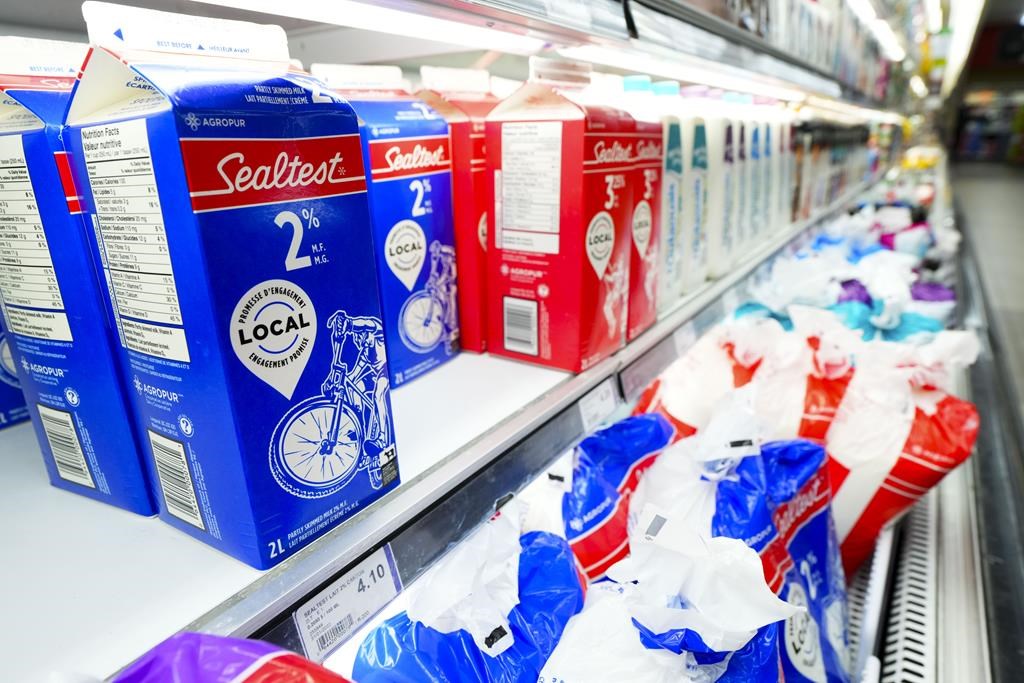New initiative to help Canadians understand if food is safe to eat past best-before date

Posted June 18, 2024 10:34 am.
Last Updated June 18, 2024 11:34 am.
Starting Tuesday, there’s a new resource to help Canadians figure out if it’s safe to eat something past the best-before date.
An app, called Too Good To Go, is launching its “Look-Smell-Taste” campaign in Canada. The app has partnered with manufacturers and retailers across the country to place stickers on certain items which, with the help of the app, will tell you if it’s OK to eat.
UBC professor of food safety engineering Siyun Wang says the best before date speaks to the peak freshness of a product, not whether it’s safe to consume.
“They are required for foods that have a shelf life within 90 days. Manufacturers have to put on a best-before date in order to fulfill the regulations and when these foods remain unopened, this is a guarantee they will stay fresh and high quality within the best-before date,” Wang explained.
“Once the food has gone beyond the best before date, there’s a chance they will no longer be as fresh, or tasty, or nutritious as what they were supposed to be.”
She says these rules apply to dairy.
“If we have stored milk properly in the fridge and it has gone beyond the best-before date for a day or two — it’s not spoiled. We smell it, it looks completely fine. Can we still drink it? My answer would be yes.”
Wang adds canned goods and dried goods don’t actually require an expiration date.
“There are several reasons, one of them is manufacturers still want to tell us about the freshness of the food products. But these foods are considered, in general, to be shelf-life stable and that’s why they don’t actually require a best-before date.”
Madison Maguire is the director of fleet and warehouse operations at Second Harvest, a Canadian food waste charity. The organization says nearly 60 per cent of food produced for Canadians is wasted every year — equivalent to just over 35 million tonnes.
She says it’s safe to eat many kinds of foods past the expiration date.
“There are actually only five foods in Canada that have an expiry date. Those foods are things like baby formula, nutritional supplements for seniors, and two others are prescription-only products. Those are ones where the expiry relates to the nutrition content, not the product freshness.”
Maguire says if you’re storing your products correctly, whether it’s in the fridge or not, she says it’s safe to consume. But it’s not a free-for-all all.
“Then we say it’s that smell test too. So, if you have your yogurt in the fridge and you’ve opened it, and then now you’re not sure, you can do that test as well,” she explained.
“[This] is one of the most misunderstood topics and can result in so much food waste, because if you’re going just solely by the date of the product without doing that test or opening to see, then lots of food is unnecessarily being thrown away.”
This comes as a new report from Food Banks Canada shows a lot of Canadians are struggling right now.

“Thirty per cent of Canadians aged 18 to 30 years old, 44.5 per cent of single-parent families, and 42 per cent of renters experience a poverty level standard of living, meaning they cannot afford two or more household essentials.”
Its experts estimate “25 per cent of Canadians are living at a poverty level living standard, compared to the official poverty rate of 10 per cent.”
The organization is calling for the use of a Material Deprivation Index (MDI) to help officials better understand what people are struggling to pay for.
“Adopting an MDI in Canada could improve our understanding of the extent and nature of poverty and help explain the gaps we’re seeing between real-life demand at food banks and the current official poverty rate. We ask that the Canadian government incorporate an MDI into their official poverty reduction strategy as part of the indicator portfolio to assess levels of poverty in Canada,” said Kirstin Beardsley, CEO of Food Banks Canada.
–With files from Mike Lloyd








